8 Ways to Safely Exercise When It’s Hot Out, Experts Say

Any time you exercise, safety should be a priority—but scorching summer temperatures highlight just how important those precautions are. According to the Centers for Disease Control and Prevention (CDC), over 67,500 people visit the hospital annually for heat stroke and other heat-related illnesses. Sadly, more than 700 of those cases result in death each year.
If that sounds like as good an excuse as any to cancel your workout, you’re absolutely right—it is. But experts say there are ways to work around the potential dangers of exercising in high heat, within reason.
“Exercising in hot weather presents unique challenges, but with the right strategies, it can be safe and effective,” says James Dixon, a certified personal trainer and lead writer at Fitness Brain. “Incorporating these measures not only enhances physical strength but also fosters resilience and adaptability in your fitness journey.”
Read on to learn how to safely exercise when it’s hot out—and when to bring your workout indoors—according to fitness experts and medical professionals.
READ THIS NEXT: If You’re Over 65, Don’t Wear These 6 Clothing Items to Exercise.
How to Safely Exercise When It’s Hot Out
1. Get your indoor groove on.

According to The Cleveland Clinic, there’s a simple rule of thumb for determining whether your outdoor workout is safe or not. If the temperature goes above 80 degrees and the humidity rises above 80 percent, move your workout indoors, their experts say.
“When the heat becomes unbearable, it’s time to embrace the air-conditioned oasis of indoor fitness,” Josh Weight, director for the physiotherapy and sports rehab clinic Gravity Physio, tells Best Life. “Hit the gym, join a fitness class, or even try out a new home workout routine. Experiment with dance-based workouts, virtual reality fitness games, or interactive exercise apps to keep your sessions fun and engaging.”
He adds that for many people, a cool and controlled environment will help motivate them to make the most of their workout before heading back out into the heat.
2. Rise and shine for an early sweat session.
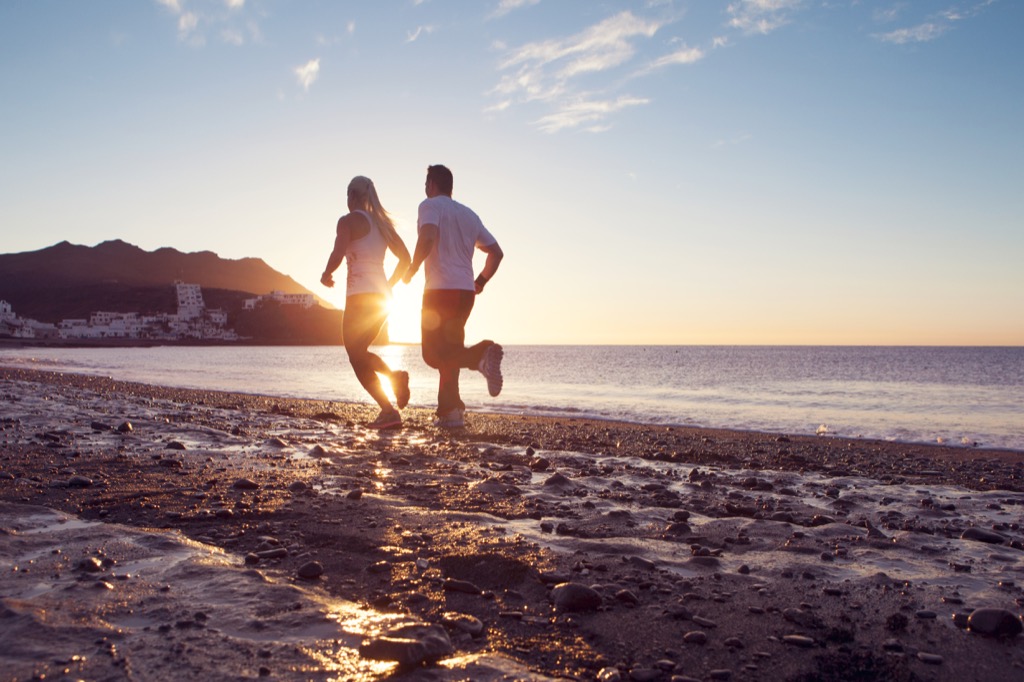
One great way to beat the heat is by lacing up your sneakers and getting your heart pumping before temperatures reach their peak.
“Exercising in the cooler morning temperatures not only reduces the risk of heat-related illnesses but also allows you to start your day with a refreshing burst of energy,” says Weight. “Plus, you’ll have the satisfaction of completing your workout while others are still hitting the snooze button.”
Dixon agrees that getting an early start can make your hot weather workout much safer—but that’s not the only benefit.
“Speaking from personal experience, the serenity and freshness of early mornings significantly enhance the effectiveness of exercise routines compared to later in the day,” he says.
READ THIS NEXT: 8 Ways to Motivate Yourself to Take a Daily Walk.
3. Go on aquatic adventures.
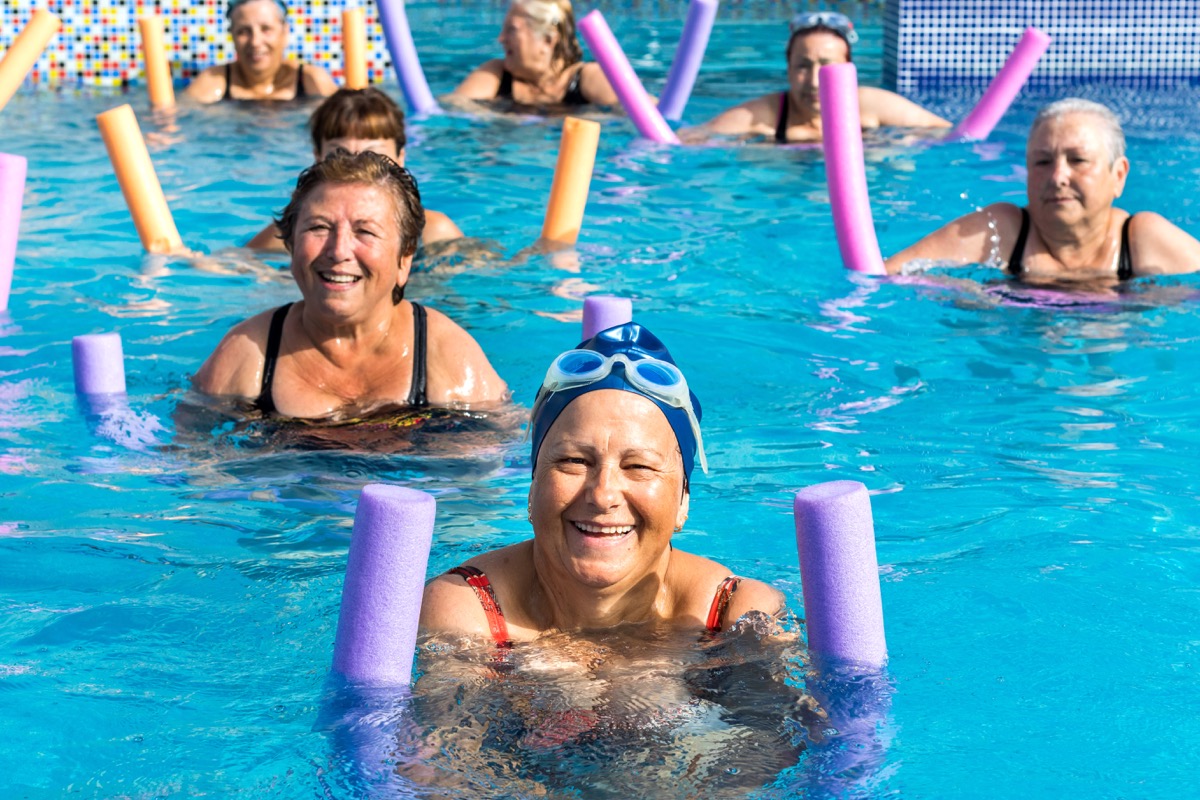
Swimming offers another safe way to exercise, with a much-reduced risk of heat-related illness or injury.
“Swimming, aqua-aerobics, or even water volleyball can be a refreshing way to stay active when the mercury rises. The buoyancy of water provides a gentle yet effective resistance that works wonders for your muscles while keeping you cool,” Weight notes.
4. Seek shady sanctuaries.
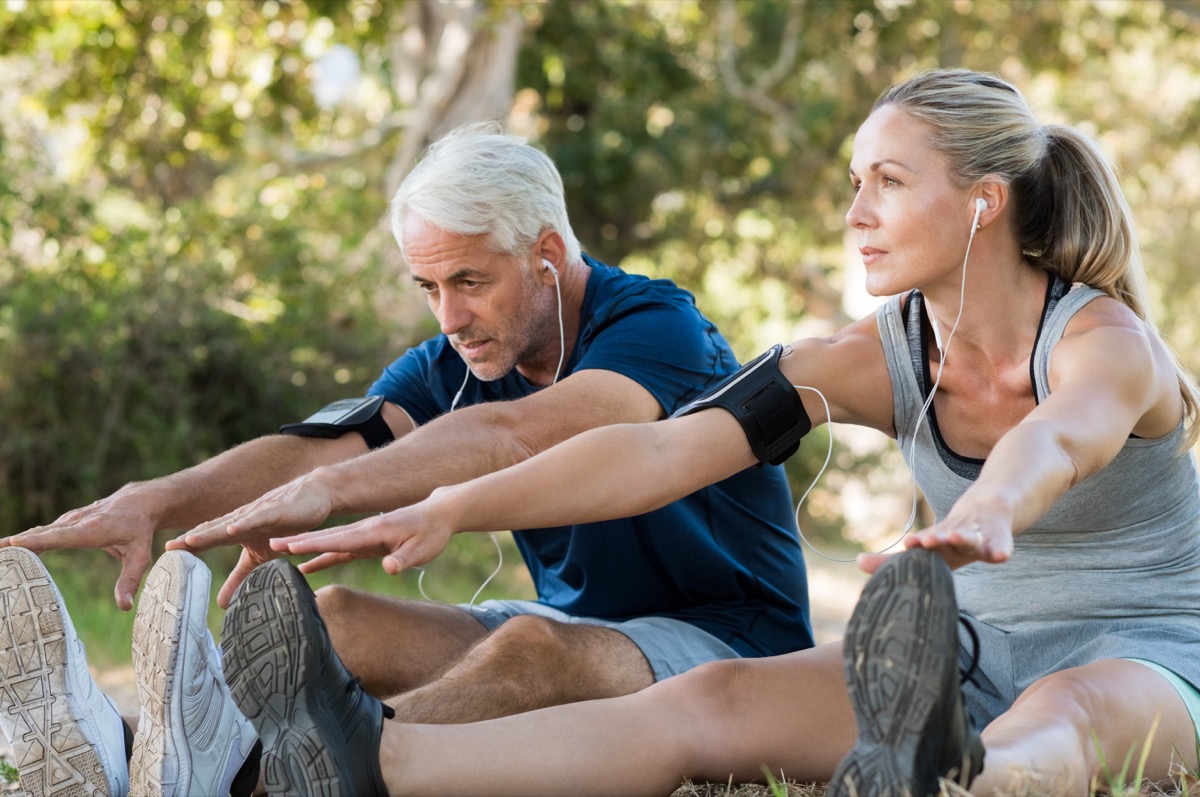
If you’ve decided to brave the heat and exercise outdoors, there are still ways to limit your time spent in direct scorching hot sunshine.
“Find shaded areas like tree-lined trails or covered parks,” suggests Weight. “Not only will these spots offer a reprieve from the blazing sun, but the natural surroundings will also add a touch of tranquility to your workout routine.”
That said, Dixon adds that it’s important to remember to protect your skin, even if shade is ample or the day is overcast. He adds that applying a high-SPF sunscreen should not be restricted to beach days but used for any and all prolonged outdoor activities.
For more health and wellness advice sent directly to your inbox, sign up for our daily newsletter.
5. Dress for success.
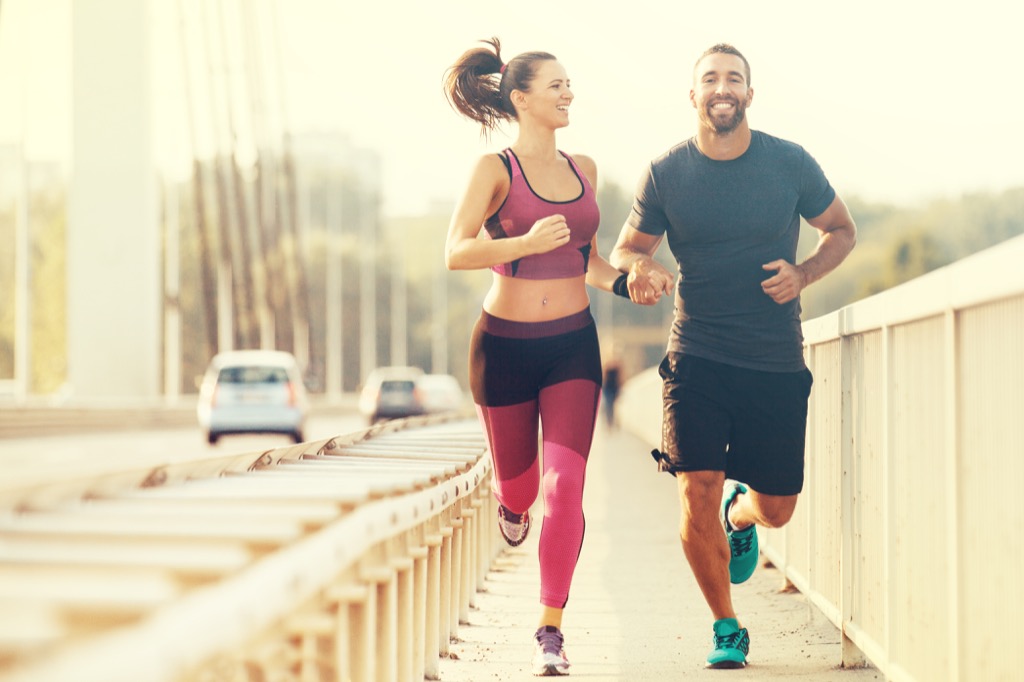
The right workout gear will also make a world of difference to your comfort and safety when you exercise on hot days.
“Opt for lightweight, moisture-wicking fabrics that allow proper ventilation and sweat evaporation,” says Weight. “Light-colored clothing can reflect sunlight and help keep you cooler. Wear a wide-brimmed hat to shield your face, and sport a pair of UV-blocking sunglasses to protect your eyes from those intense rays.”
6. Embrace the power of popsicles.
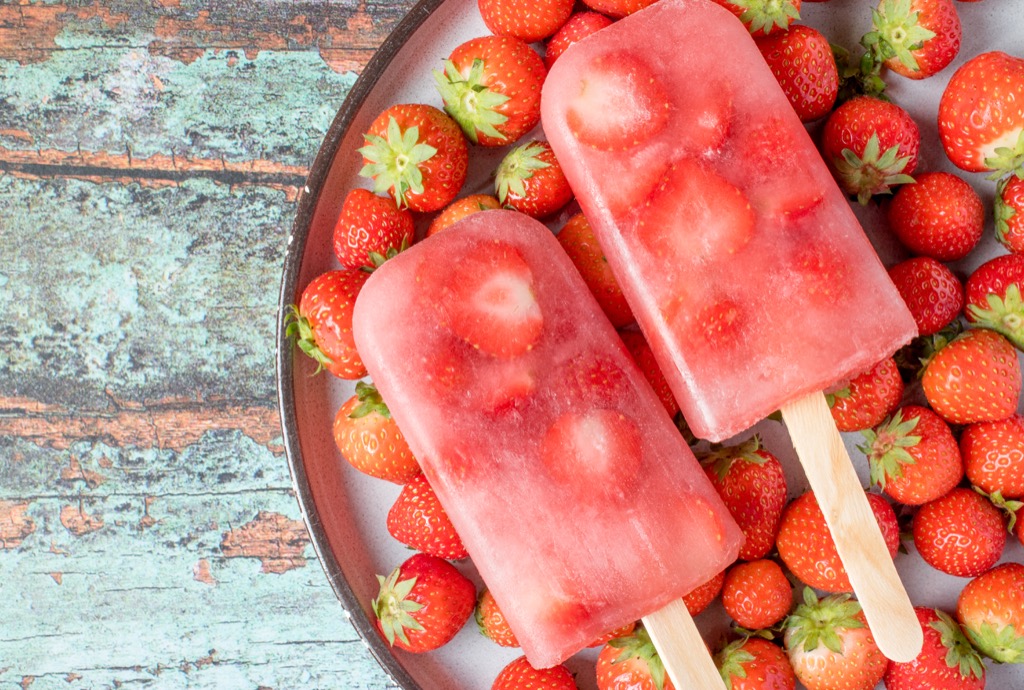
Weight has another favorite way to stay safe while exercising on hot days—and it doubles as a reward for a job well done.
“Prepare some homemade fruit popsicles before your workout and enjoy them as a post-exercise treat,” the physiotherapy expert suggests. “Not only will these icy delights help replenish your fluids, but they also provide a delightful burst of natural sweetness. Get creative with different flavors like watermelon-mint, strawberry-lemon, or even cucumber-lime. It’s a fun and tasty way to reward yourself while keeping your cool after a hot and sweaty workout.”
READ THIS NEXT: 6 Signs You Aren’t Drinking Enough Water, According to Doctors.
7. Stay hydrated and drink your electrolytes.
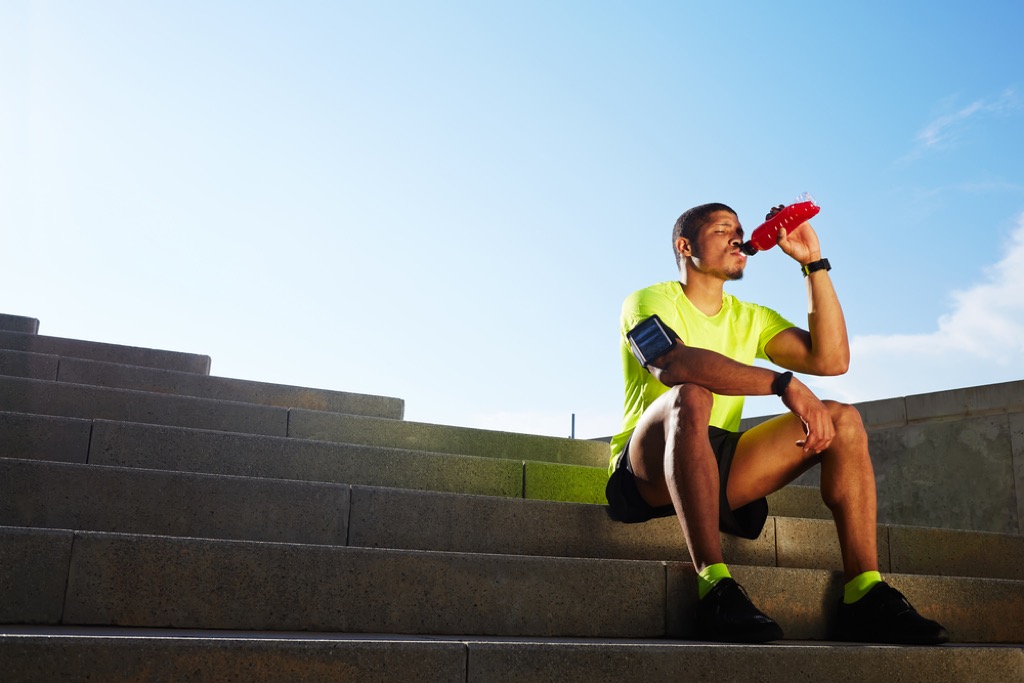
You likely already know the importance of staying hydrated on a hot day. When the temperatures are especially crushing, experts say it’s crucial to bring your beverages so you can fill up before, during, and after your workout.
“Keeping hydrated cannot be overlooked. Consuming a minimum of 10 glasses of water daily is essential, and during workout sessions, isotonic sports drinks help replenish lost salts and minerals,” Dixon recommends.
Trista Best, MPH, RD, LD, a registered dietitian at Balance One Supplements, explains why electrolytes are so important to your hot weather workout.
“When you sweat, you not only lose water but also electrolytes like sodium, potassium, and magnesium. These electrolytes play a crucial role in maintaining fluid balance and supporting proper muscle and nerve function,” she tells Best Life.
“During hot workouts, drinking electrolyte-rich beverages can help restore these lost minerals, improving hydration and preventing electrolyte imbalances. Sodium, in particular, helps retain fluid and enhances the body’s ability to absorb water. Potassium is essential for muscle contractions and maintaining proper heart function,” she explains.
8. Listen to your body and know your limits.
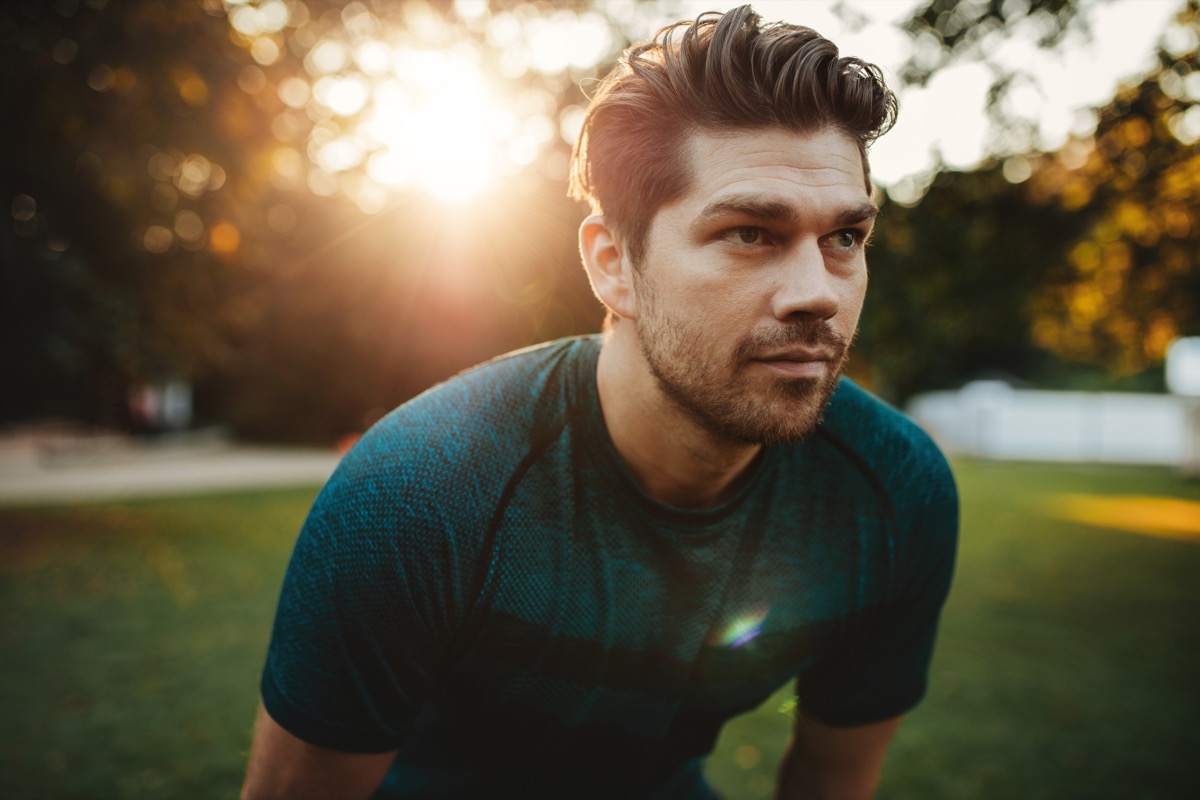
In order to exercise safely when it’s hot out, it’s also important to listen to your body.
“Pay attention to how you’re feeling during your workout,” says L.S. Wang, MD, an orthopedic surgeon and medical director of Arete Orthopaedic Clinic. “If you start to feel dizzy, faint, nauseous, or stop sweating, stop exercising immediately,” he warns, noting that these could be signs of heat exhaustion or heat stroke—both of which are serious conditions. The doctor adds that gradually acclimating to your workout can help you stay more in tune with your own limits.
Dixon suggests that doing interval training or circuits with extended rest periods may help your body cool down between more intense periods of exertion. “Despite popular misconceptions, such methods can indeed burn more calories than steady-state cardio,” he notes.
Best Life offers the most up-to-date information from top experts, new research, and health agencies, but our content is not meant to be a substitute for professional guidance. When it comes to the medication you’re taking or any other health questions you have, always consult your healthcare provider directly.